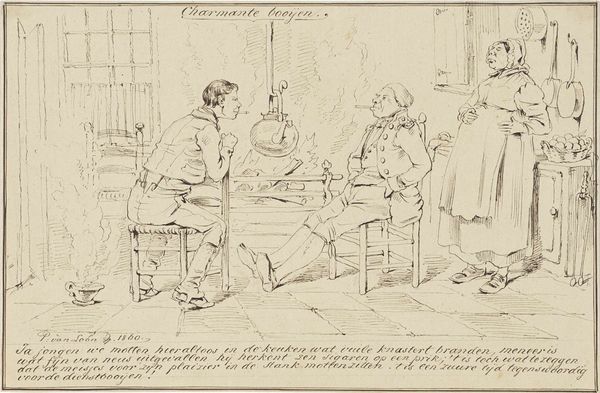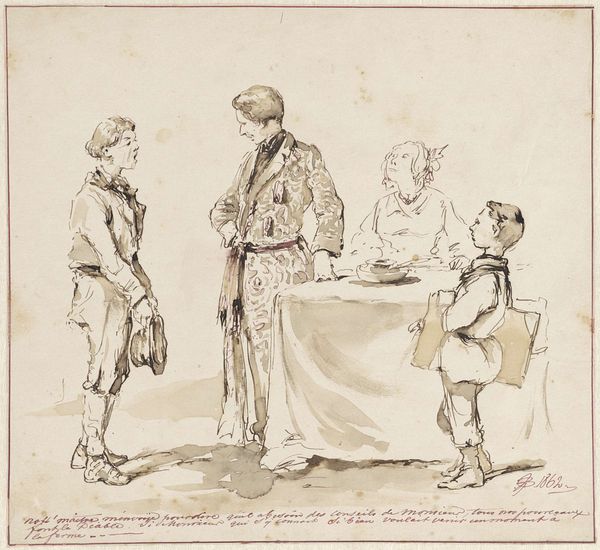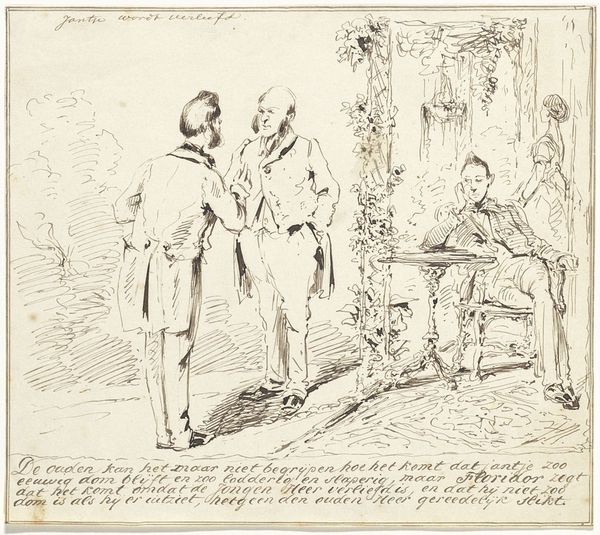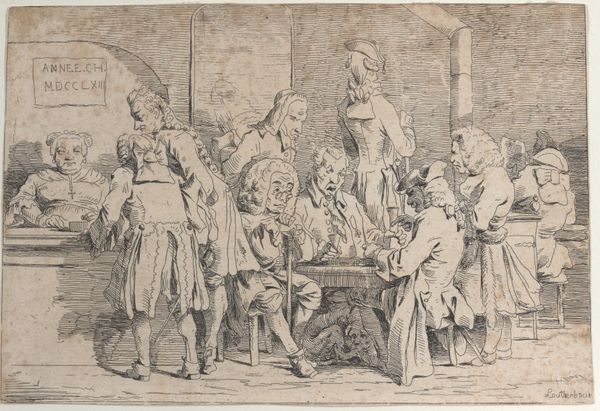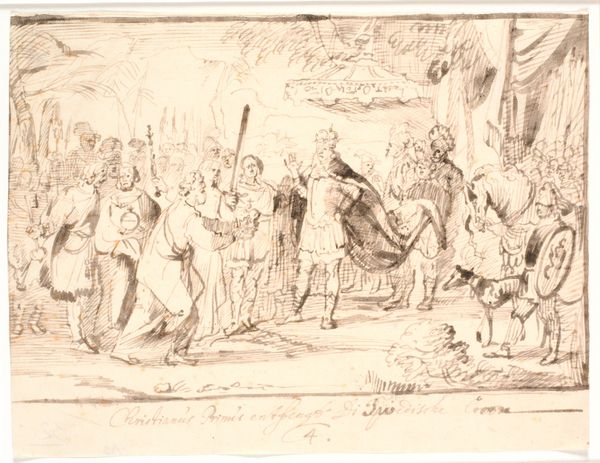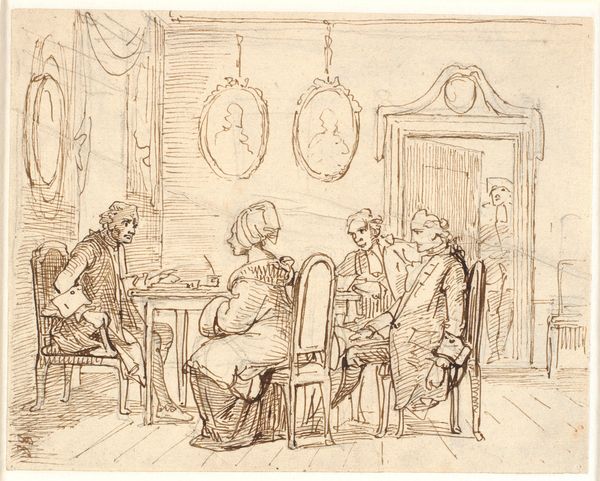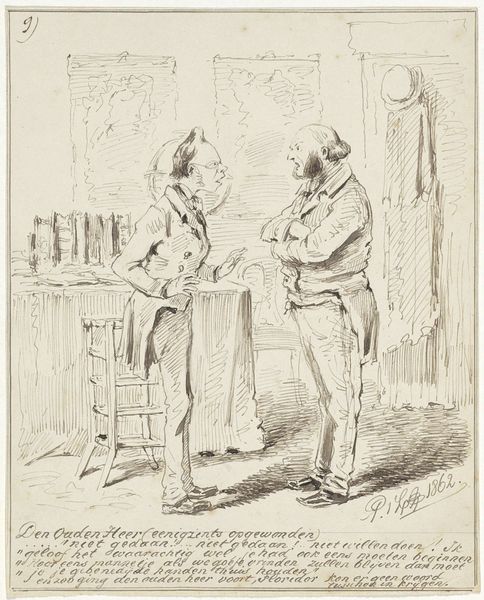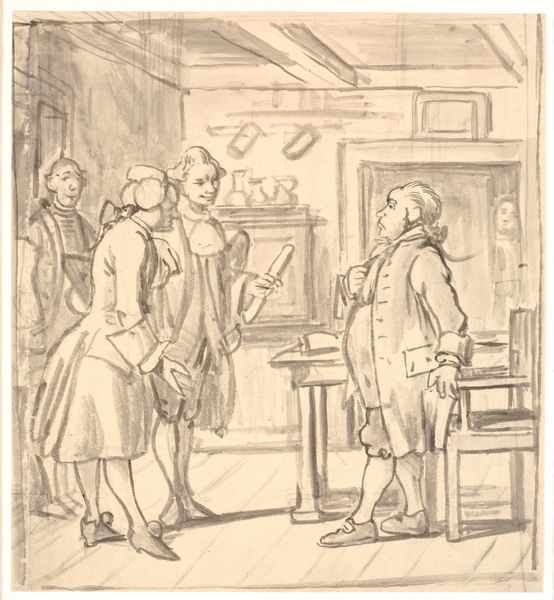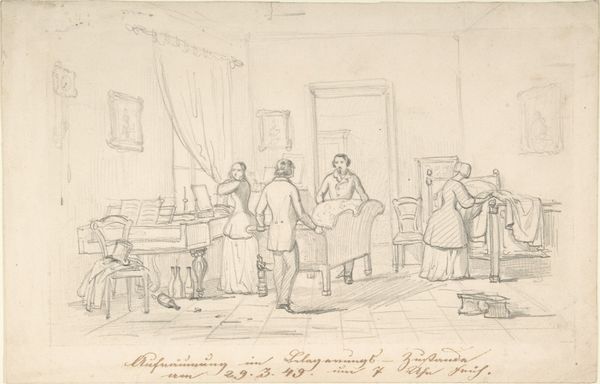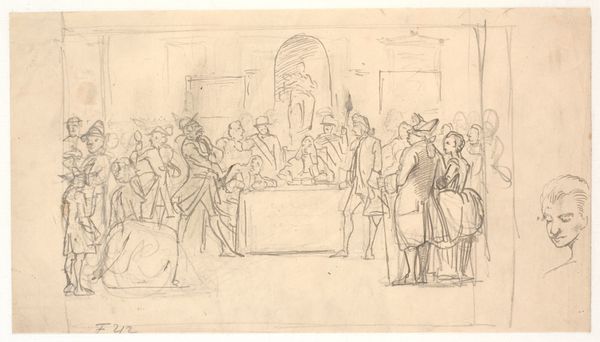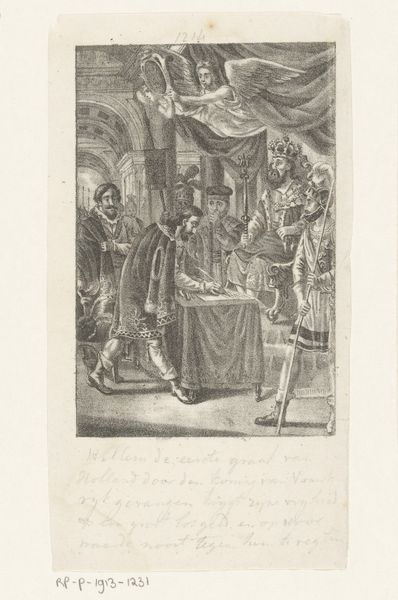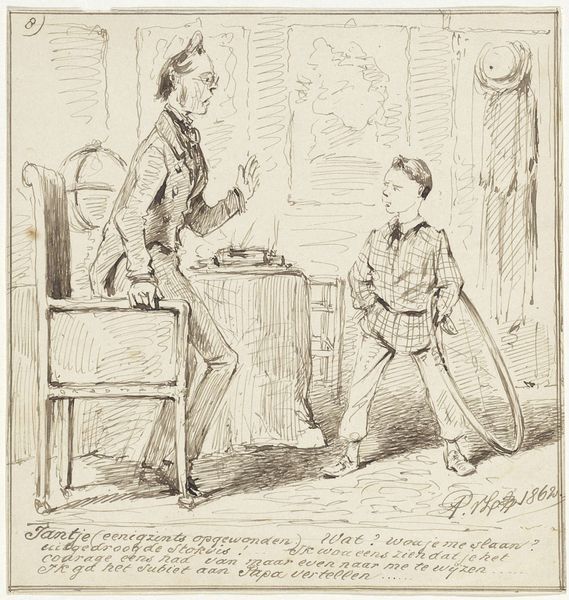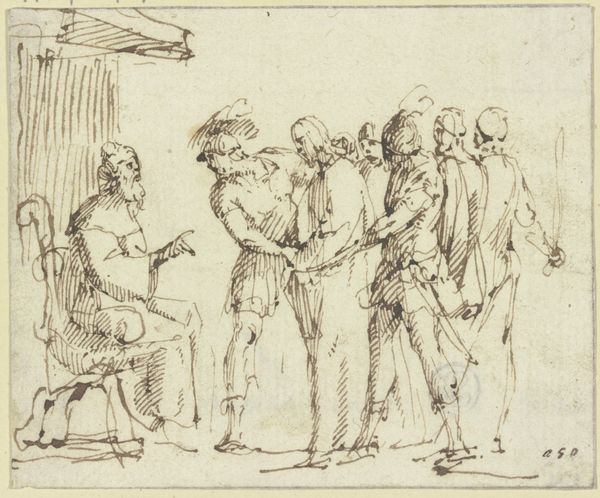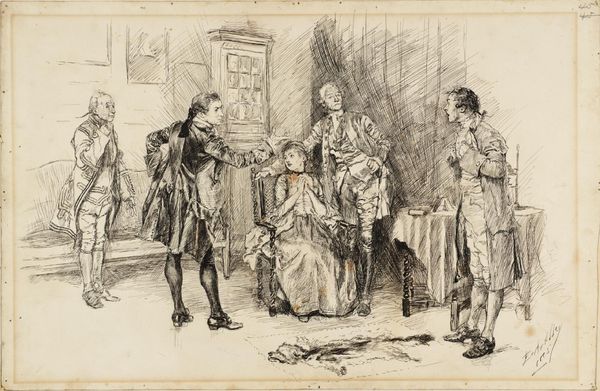
drawing, ink, pen
#
drawing
#
toned paper
#
mechanical pen drawing
#
caricature
#
pencil sketch
#
personal sketchbook
#
ink
#
sketchwork
#
ink drawing experimentation
#
pen-ink sketch
#
sketchbook drawing
#
pen
#
genre-painting
#
history-painting
#
storyboard and sketchbook work
#
sketchbook art
#
modernism
Dimensions: height 166 mm, width 211 mm
Copyright: Rijks Museum: Open Domain
Curator: Right, let's talk about "Verhaal van de jongen Jantje, nr. 5" by Pieter van Loon. Created around 1862-1863, it’s a pen and ink drawing on toned paper. It currently resides here at the Rijksmuseum. What are your immediate thoughts? Editor: Well, it’s wonderfully chaotic! A gathering, maybe a meeting, but something definitely feels off. Everyone’s a bit… exaggerated? A little warped, like a funhouse mirror reflection of 19th-century formality. I almost hear a kazoo accompaniment. Curator: That chaotic feel really resonates with the work's satirical bent. Van Loon used caricature brilliantly to critique social hierarchies and the often absurd posturing of authority figures in Dutch society. It's particularly interesting how the figure of the 'boy Jantje' is at the center of attention with all eyes seemingly turned on him, but perhaps only as the excuse for some serious men to show off. Editor: Absolutely. It's about power, who gets to be elegant, who's considered 'extra.' This reminds me of how we still see art as a way to 'anoint' power dynamics today. Plus the technique! The scratchy lines, the nervous energy practically vibrating off the page. What do you read into that frantic sketchiness? Curator: Precisely. The hurried line work, it mirrors the instability of political maneuvering at the time. The piece emerged during a period of evolving Dutch liberalism. Those seemingly simple lines actually encapsulate broader struggles of class, status and representation, using accessible humor as a critical tool. Editor: Exactly! The political and social commentary is pretty blunt. But it is the accessibility that hooks you. It isn’t high brow like so many contemporary artists are afraid of, and somehow the ink-on-paper-rawness makes it feel surprisingly timely. I wonder if we've really moved on that much since then. Curator: And this piece functions as more than just a standalone image. We need to consider that the numbering of it – as Number 5 – implies this was a chapter within a series, offering potentially sequential viewpoints into the life and role of Jantje, a common literary trope of the era. The images within this series helped shape perceptions, cement cultural archetypes, and potentially reinforce moral lessons, through this period. Editor: So, a historical sitcom then? "The Jantje Chronicles!" Well, Pieter, thanks for reminding us that social commentary doesn’t have to be dour! I for one will leave this a little more buoyant and energized today. Curator: I agree entirely. The lightness with which Van Loon approached serious themes makes it a continued pleasure to observe this piece, and to ruminate on how our shared struggles play out again and again, from his day to our own.
Comments
No comments
Be the first to comment and join the conversation on the ultimate creative platform.
